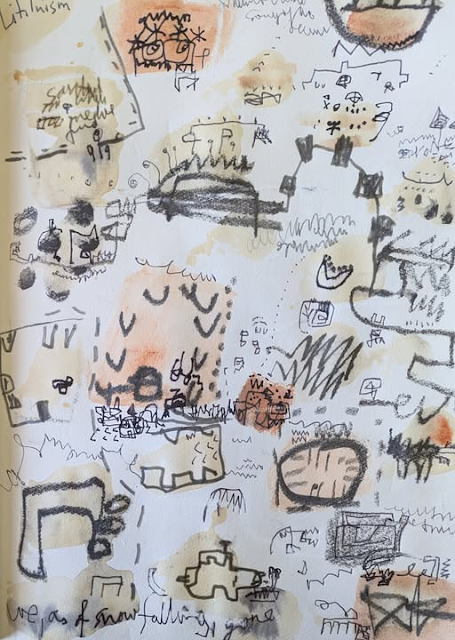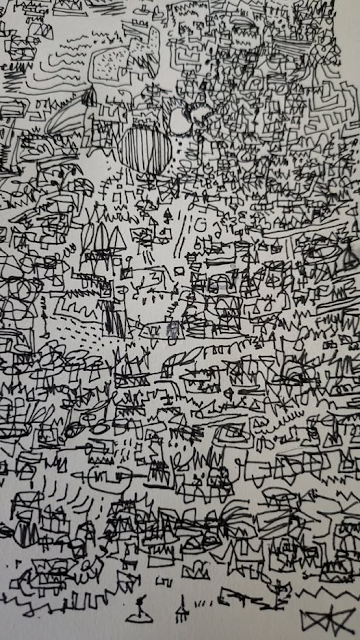living in a volcano
song
came up
here to the top of the world
just to get
a better view
met Thor and
saw where the bolt was hurled
now nobody
seems to care
that
we’re
living in a volcano
hiding under the ice
nobody knows when it’s going to blow
but we’re here to take advice
you’d think
that up here on the top-
you could
get a breath of fresh air
but there’s
fire and brimstone all over the shop
it drives a
Viking spare
to be
living in a volcano
hiding under the ice
nobody knows when it’s going to blow
but we’re here to take advice
there’s
another crisis coming
emperors
are feeding on our fear
you spot
the dollars as they’re floating off
you’d think
it would be safe up here
but we’re
living in a volcano
hiding under the ice
nobody knows when it’s going to blow
but we’re here to take advice
all this
marauding and hoarding
civilization
at last
we’re
boarding up all the hopes and dreams
the ice is
melting fast
nobody
knows how we got here
but I’m
sure it wasn’t nice
living in a volcano
hiding under the ice
made of burnt stone
breath to grey bright
blur trees to distance
not a hair out
having waited in a cloud so far
under the weight of day
a stillness fitting the frame
a sheep sun
fleecing
sky is high
cows as far
as milk
there are
lines
billowing
gone
a little
sea the snow meets
friskybit
horsies
wispy dour
soft spoken
for mist
this is the
thousand year penance of flesh
that’s cloud there
here’s a heaving sea
dark moss climb
the eye behind
six thousand and seventy three years
from the world’s beginning
smoky bay
thwart fixed to gunwale
and where the high seat washed ashore
step a little inland, brackish
squat turf mossed for a hat
bones in the turf wall warding off
indoors choking, soaked and frozen
even the sea looks like a ship
let's play foxes and lambs
later will be the chimney village
colourful plague of deathflies
forebodes
there will be a butter house
gossip streets
weight of words to choke down
concupiscapes
flows of blow now set
flower ready for the rain
weather’s telling itself over
they’re waking up to this again
gods build their ruins here
a tree grows green towards
and down as fast as up
come perch here, nest, sing
grub through the dream
a cast of dark
a sprig of light
it's as when I was with the mountain
falls away to nothing
they tend their own alphabet here
and heroes are a sort of soil
the spirit wisp of lyric flag
a boat in my pocket
a house in my head
cloud for a wheel to roll on
they're growing the flags in China for here
it's midsummer no night
the sea beside me in this bed
sea is a salt wishing waking
the logical conclusion of paper is fire
a sword is for the dead to travel
go into the mountain just here, just now
that's where time is gone
the flower in flower
the bee in flight
the bright, as if to colour called
how much of us is the sea
the sea is a mountain too
the moss
like a thought lain
for a hat
for a sky
as heaven grey
dusk gentle
the fish commits to salt
to travel is to imagine a world
otherwise you're where you are
fingers nimble to
must believe
the
hillscramble underhoof
leaf strew
look up
twig just
and times
you’re wild
crash through
sun
fleece
birch
grass
bird and sky
we have only imagined ourselves
the spirit wisp of lyric flag
the effigy obverse
beech, birch, spruce, alder, sassafras
bird was the first breath here –
a speculative venture
what can be brought in a beak?
Yggdrasil
at one time a tree was the world
who knew?
we’re still guessing
before the ice and since
a nunatak of the younger Dryas
a thousand years treeless
(thank far ancestors for that)
what do
they believe of us?
the glimmer folk
cloud caps
them
they’re yay
high
everywhere’s
alive
and here’s
the proof
they hide
things – one sock, a spoon
the map for
the day
they’ll
steal a lid
to keep you
from remembering
don’t call them by their real names
don’t throw
stones, you never know
sometimes
best not to speak presence
to each be
as we are
all sacred,
everywhere so
they show
from stones of where
nor with
our words
but light,
but bells, but in the running
in every
tree, this waking – spring
cloud and
blanket over
they are a
mirror to us
moss their
forest, cleft shy crag
breeze
free, sometimes severe
explain the
vengeance of a living land
it’s just
the same as for us to remember
today’s the
day we’re not here
tap on a
cloud for memory
come in
come in, you’re welcome
hung for a
lonely hope of washing
travellers
all, breeze and go
each unlike
another
these are the clouds at the top of
the world
horizon biding,
hill high
a
parliament of them
house was a ship
a sea tether
wreck of shore
making up a world again
from just these stories
just from this sky
a whim of light
hollow and hilly
the fire before we ever were
a sunfirst winter sliver
it’s
stuffing a fish
with a sea
with a ship
with the
dream of a sailor to drown
elven
an abduction
no choice but to imagine us
their gravity’s of another world
lithe, limber
they, as well, have their pet lambs
their markets
come out of the mountain
they are joined at the dance
if show themselves
they take a care
are made of music
their script like a song
and heavenward with that
hidden for a good cause
they are suspicious too
grey of touch
they milk the mares
and ride around a battle
rust to a sea
pack bags, set out
the elfshot lays low cattle
by elfsneak, object gone
dark ones and light ones
they can make new hair
breeze woven
pencil folk
revengeful
knock on a rock
come in if you dare
sometimes to know the sky is to fly
we, too, are of thin air
someone
once
and the ice
and the fire
a sea
beside, a mist in
just
landing, come crevice safe
and a slant
beam shows
all the
bright is just between
rain’s the
thing that lasts
a flower bent to its thousand years























































